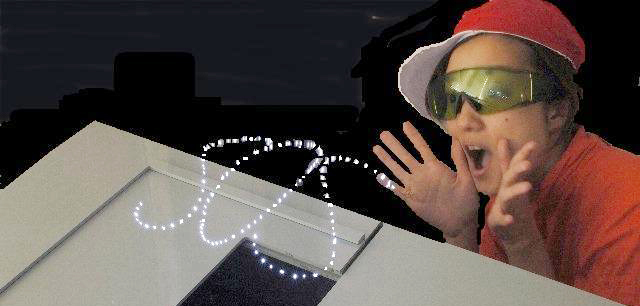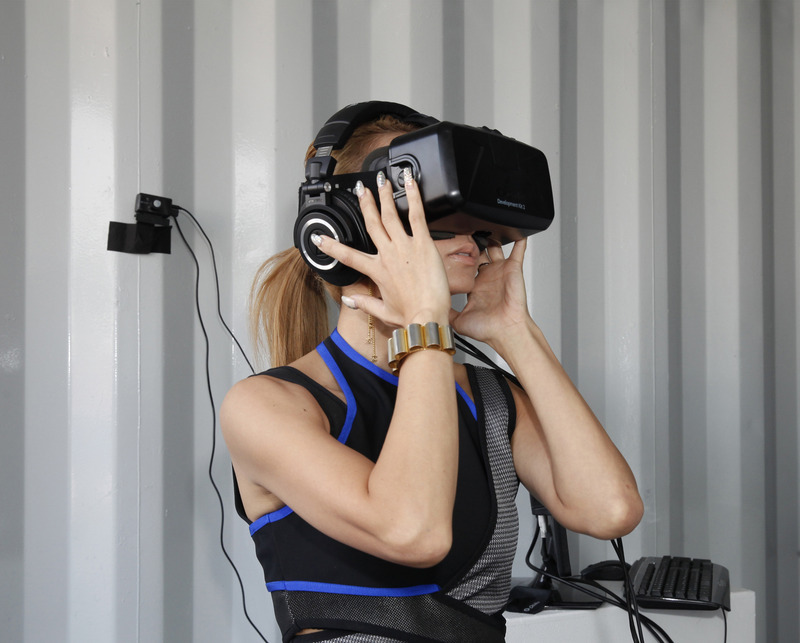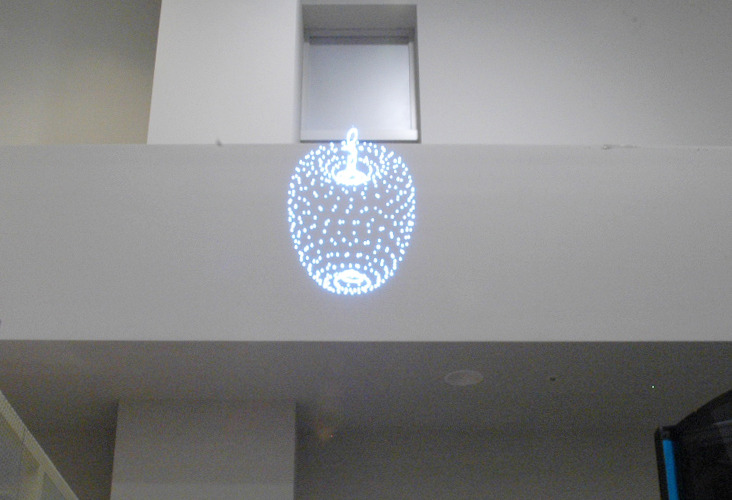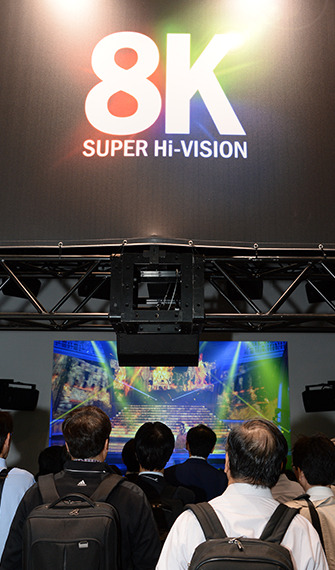Note: This website was automatically translated, so some terms or nuances may not be completely accurate.
The New Tactility of Information Revealed by Cutting-Edge Display Technology
 |
 |
Until a few years ago, the star attraction at electronics exhibitions like CEATEC JAPAN was high-definition, large-screen televisions. The beautiful images displayed across vast areas were spectacular, but this sight has become less common in recent years. The high-definition images we once admired are now carried around by many people in their bags or pockets. In the OOH sector, high-definition digital signage images now color the streets. In the event industry, technologies like projection mapping and holograms are becoming commonplace, expanding where video exists and how it exists. Video technology will continue to evolve. Here, we introduce its cutting edge.
Ahead of the 2020 Tokyo Olympics and Paralympics, 8K Super Hi-Vision is scheduled to begin practical broadcasting on BS and other channels in 2018. The experience delivered by 8K video, developed primarily by NHK's Broadcasting Technology Research Laboratories, seems to transcend the very concept of video. Its overwhelming sense of presence and power, stimulating all the senses, offers us an emotional experience that, in a sense, surpasses reality. Beyond enhancing personal viewing experiences for high-end consumers, these technologies hold promise for enriching public viewing experiences in venues like movie theaters and live-viewing events in urban spaces. High-definition imaging technologies like 4K and 8K will undoubtedly make our visual communication richer in the years to come. |
| | |
The Direction of Wearables |
The wearable transformation of video technology is finally reaching practical application. While various companies are announcing wearable video devices, their direction seems to split into two main paths.
One is wearable video devices serving as information terminals, exemplified by glasses-type devices like Google Glass. By wearing information, users can access it without looking down at their smartphones, reducing the time and distance required to access information. This technology hints at a future where the boundary between online and offline life disappears. Furthermore, by enabling hands-free information display, it supports tasks requiring both hands, and companies are developing these devices envisioning various usage scenarios.
| |  |
| |
Kumi Koda experiencing her own immersive music video |
Another type is a device designed for viewing images with an otherworldly sensation. Specialized for entertainment content like movies and games, it delivers an experience entirely different from conventional video viewing. The globally acclaimed immersive 3D head-mounted display "Oculus Rift" incorporates virtual reality and is being utilized for 360-degree experiential music videos (MVs). For Kumi Koda's new song "Dance In The Rain," the world's first Oculus Rift-compatible music video was produced.
It became a hot topic at TOKYO DESIGNERS WEEK (October 28 - November 3).
 Watch the video here↓
Watch the video here↓
http://rhythmzone.net/koda/ditr/
| | |
The Future of Spatial Projection Displays |
 |
Spatial projection displays, once thought to belong only in the world of science fiction movies, have now entered the practical application stage. While various technologies are still being researched for implementation methods, concrete examples are increasingly visible in storefront show windows, signage, and events. Here, we introduce two technologies developed in Japan. Asukanet's AI (Aerial Imaging) Plate is a technology made possible by Japan's cutting-edge manufacturing capabilities, capable of projecting vivid images into the air. Research and prototyping are underway, such as displaying 3D models of products in the air as signage or combining it with various sensors to operate equipment mid-air.
| |  |
| |
3D image of an apple floating in space |
Furthermore, research is advancing not just on projection, but on actually generating 3D images within space itself. A device unveiled by the National Museum of Emerging Science and Innovation (Miraikan) enables viewing 3D images in a screenless space using plasma light emission (this technology is the world's only of its kind and has secured an international patent). It has also been successfully miniaturized for vehicle installation and is expected to be commercialized next year. This opens possibilities for applications like emergency display devices during disaster response and outdoor digital signage. Such technology liberates images from hardware constraints, allowing pure images to exist in space. It hints at a future where the relationship between images and people becomes more free.
 Watch the video here↓
Watch the video here↓
http://jp.diginfo.tv/v/14-0044-jp.php
Research indicates that humans obtain approximately 80% of external information through their eyes. Consequently, the importance of visual technology in communication is unlikely to diminish. Video serves diverse roles, ranging from delivering surreal, awe-inspiring experiences to acting as transformative technology reshaping information societies and communication. We will continue to monitor the evolution of this technology.

Dentsu Inc. Experience Technology is a technology group that combines digital and analog technologies to create unprecedented emotional experiences (experiences). Even ideas that seem impossible to realize may find a path to implementation through technology. Feel free to contact us with any opinions, inquiries, or consultations at |
Was this article helpful?

